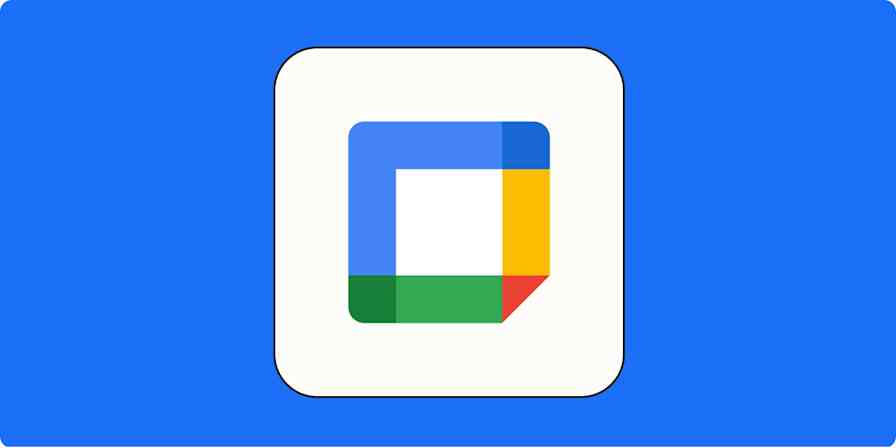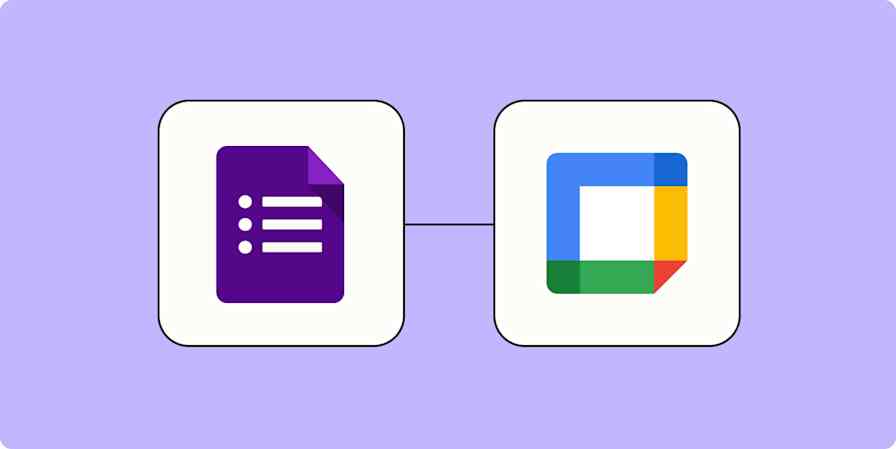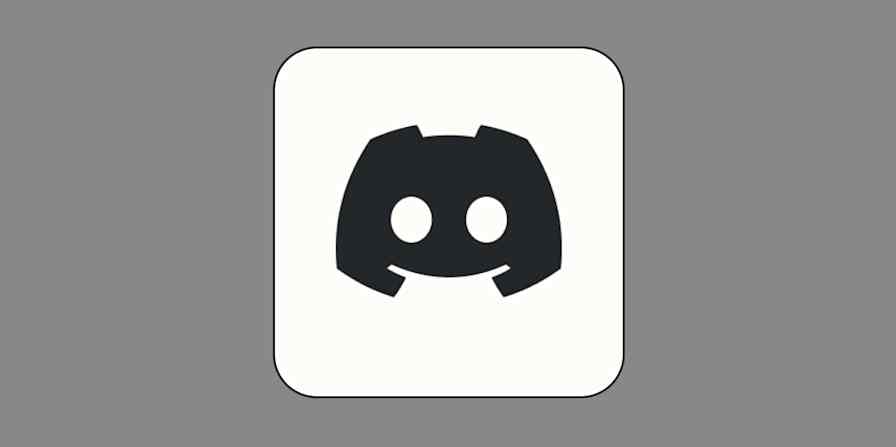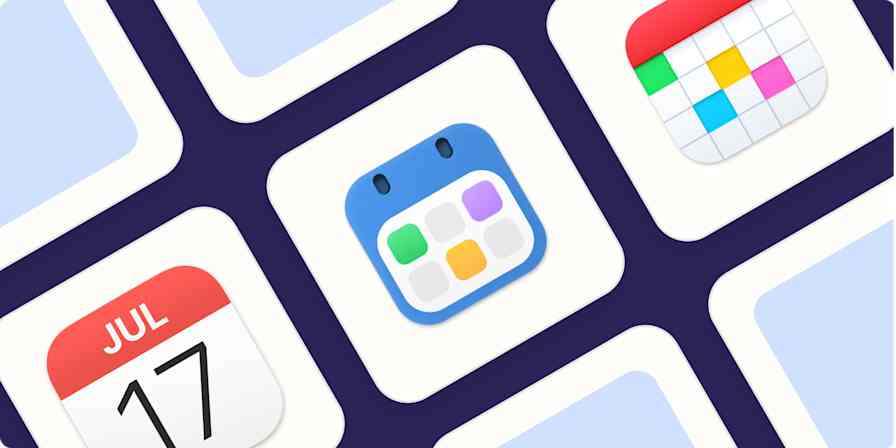The secrets to productivity are so often boring. The most important time-management tool you can use? The humble calendar. If you think time is money, your calendar is your budget. That's why it's important to have the best calendar app possible.
But time management isn't just writing down what you'll do when. It requires coordinating with other people on your team, especially if you work remotely at least some of the time. It also means keeping track of where your time went, and generally knowing who will be where doing what at whatever time. And that's just thinking professionally. A calendar can also be incredibly important in your personal life.
I considered and tested dozens of calendars to find the best of the best. Whether you're looking for a Google Calendar alternative or just want to see what's out there, here are my picks for the five best calendar apps.
The best calendar apps
Google Calendar for the best free calendar app for teams
Microsoft Outlook Calendar for Microsoft users
Calendar for scheduling external appointments
Apple Calendar for a free option for Apple users
Fantastical for the best design
What makes the best calendar app?
How we evaluate and test apps
Our best apps roundups are written by humans who've spent much of their careers using, testing, and writing about software. Unless explicitly stated, we spend dozens of hours researching and testing apps, using each app as it's intended to be used and evaluating it against the criteria we set for the category. We're never paid for placement in our articles from any app or for links to any site—we value the trust readers put in us to offer authentic evaluations of the categories and apps we review. For more details on our process, read the full rundown of how we select apps to feature on the Zapier blog.
Calendars, of course, show you your schedule. Even the most barebones and buggy calendar app normally manages to pull that off. The best calendars, however, aren't just functional—they fit seamlessly into your life and give you the features that enable you to keep on top of how you spend your time.
I've been a tech writer for more than a decade and rely on my calendar to keep all the small moving pieces of a freelance career in check. I also use my calendar in my personal life to make sure nothing—like a trip to the dentist or friend's birthday—slips through the cracks. My top choice, Fantastical (it's on this list), is one of a handful of apps I use every single day.
In my opinion, the best calendar apps are:
Easy to use. Calendar apps are easy to use when they require minimal clicking and menu exploration. You should be able to add events quickly and accurately, see what's coming up, and arrange your schedule without having to hit up the help docs.
Designed with intention. Does the calendar software do what it says it's going to do? And does it do it well? While calendars are simple in principle, in practice, there are plenty of challenges to overcome. How do they handle time zones? Or overlapping events? Can you use it for both your personal life and your professional life? I wanted to find calendars that feel like they were made by people who love calendars.
Packed with features and customizable. If you just need a way to keep track of your days, a desk calendar will do fine. But if you're a serious scheduler, power features, such as customizable views and integrations, will help you get the most out of your calendar app. For those apps that aren't heavy on features, I looked for customization options that make the app adjust to your style—a calendar app should give you options, not lock you into a certain way of planning your day.
Simple to share. You almost certainly need to schedule events with other people—whether they're for work or your personal life. The best shared calendar apps include invitations to events and even the ability to share entire calendars. That way, you can keep your schedules in sync when you need to.
Available for multiple devices. I gave preference to apps that are accessible on more than one platform. The best online calendar lets you see your schedule no matter where you are or what device you have on hand—or at least on all the devices you own.
For the most part, I focused on calendar platforms—I didn't consider mobile- or desktop-only apps designed just to sync with other services. If an app was built on top of other calendar platforms, I required it to add a lot of extra features to make the cut. Check out Zapier's lists of Android calendar apps, iPhone calendar apps, Windows calendar apps, and Mac calendar apps if you want those sorts of platform-specific applications.
What about AI calendars?
Calendars feel like one of those tools that might be disrupted by AI in the future—but it hasn't happened yet. I tested the top AI scheduling tools to see if any of them could double as a standalone calendar, and none quite pulled it off.
While these apps are great at automatically managing and rearranging your schedule, you'll still want a calendar app to actually view things as you go about your day. Some of these AI schedulers don't have a mobile app, others work through WhatsApp bots, and anyway, they're almost all built on top of a dedicated calendar service like Google Calendar, so you can't even use them without signing up for one of the top picks on this list.
If your struggle is figuring out how to fit the various different pieces of your day together, especially if you're collaborating with a team, check out an AI scheduling app. But for most people, they aren't a viable standalone calendar replacement.
With that, here are the best calendar apps.
The best calendar apps at a glance
Best for | Stand-out feature | Pricing | |
|---|---|---|---|
A free calendar app for teams | Seamless integration with most other calendar services | Free with a Google account; Business Starter for Google Workspace starts at $6/user/month | |
Microsoft users | Works really well cross-platform | Free on Windows, macOS, iOS, and Android (some features require a paid subscription); Microsoft 365 Business Basic starts at $6/user/month with an annual contract | |
Scheduling external appointments | Combined calendar and meeting scheduler | Free plan available; Standard version starts at $25/month with 5 scheduling time slots, Pro starts at $30/month with unlimited scheduling slots | |
Apple users | Deep integration with Apple ecosystem | Included with macOS and iOS devices, or via iCloud with an Apple ID | |
A nice design | Super powerful features | Free basic calendar; Premium plan with scheduling and other features starts from $4.75/month (billed annually) |
Best free calendar app for teams
Google Calendar (Android, iOS, Web)

Google Calendar pros:
Free and widely available to anyone with a Google account
Integrates nicely with almost any other calendar service you care to use
Google Calendar cons:
Requires a Google account to use, so it can be inconvenient if you use another service to manage your email
No desktop apps, though it integrates with lots of them
Google Calendar is both powerful and flexible, all without being hard to use. If all you want is a simple calendar to keep track of your events, you're covered. It doesn't take long to learn how to add events, or switch from the default week view to a month or day view. Even inviting other contacts, or adding a Google Meet video conference, is straightforward.
Dig in, though, and you'll find all kinds of features. You can share entire calendars, for example, which is great for coordinating with your team or even just having a shared calendar with your significant other. (It's how my partner and I coordinate our hectic schedules.) You can create as many calendars as you want or subscribe to any iCal-compatible calendar, then choose which calendars you do and do not want to see. There are great mobile apps, or you can use a third-party app for the desktop if you prefer (every other app on this list can sync with Google Calendar).
Google is also slowly adding AI-powered features to all its apps. While Gemini can only really create or edit events with Google Calendar, it's only a matter of time before it gets more powerful features. Until then, lots of Zapier's favorite AI scheduling apps can use Google Calendar as their backbone—in fact, many of them require that you do so. It's this wide-ranging level of integration and flexibility that makes Google Calendar so easy to recommend.
Of course, you don't have to look to third-party apps. Google Calendar's integration with other Google tools is another plus, assuming you're already a Google user. It's easy to see Google Calendar in your Gmail sidebar, for example, or to invite your Google Contacts to an event. Google Workspace users have access to a number of work-related features, including many specifically meant for remote or hybrid teams. There's a work location tool and the ability to split your work hours, both of which recognize the changing nature of work. And you can create appointment slots to mimic a meeting scheduler tool. If you're looking for one calendar to coordinate a professional team, Google Calendar really should be it.
Overall, it's hard to find much to complain about with the Google Calendar app, and believe me—I love complaining. It should be the first calendar app most people try, whether you need it for your personal or professional life.
Want more out of your calendar? Connect Google Calendar to your favorite apps through Zapier. You can create automated workflows that send calendar appointments to other apps, like Trello or Todoist. You can even create calendar appointments from spreadsheets. Learn more about how to automate Google Calendar, or get started with one of these pre-made templates.
Create new Trello cards from new Google Calendar events
Copy new Google Calendar events to another Google Calendar
Google Calendar pricing: Free with a Google account; Business Starter for Google Workspace, which includes all Google apps, starts at $6/user/month with a one-year commitment.
Best calendar app for Microsoft users
Microsoft Outlook Calendar (Android, iOS, macOS, Windows, Web)

Outlook Calendar pros:
Shockingly good app on Windows, Mac, iOS, and Android, that also includes email and contacts management features
Powerful enterprise features for any company that relies on Microsoft's apps
Outlook Calendar cons:
Adding and subscribing to other calendar services is a bit of a mess
Outlook dates back to the '90s and is still one of the best calendar apps on the market today. It combines email, calendar, and contacts in one application. Some people love this approach, and some people don't. Either way, the calendar itself is solid—and it's one of my favorite email apps too.
Adding events to your calendar only takes a couple of clicks. You can add multiple calendars and have multiple views, including today, this week, and even just the work week. Support for Exchange and Microsoft 365 accounts means it's easy to send event invitations to other people at your company, compare your schedule to theirs while doing so, or share entire calendars. The built-in Scheduling Assistant can also help you find an open spot in everyone's calendar for a meeting.
If your company runs on Microsoft, this will be your calendar app. But Outlook is worth checking out regardless because of a few really nice features. The weather is always right there at the top of your calendar, for example. It's easy to change an email into a calendar appointment or to see your email alongside your calendar. And there's support for adding iCalendar subscriptions. The mobile apps are also really nice, both on Android and iOS.
Like Google, Microsoft is adding AI-powered features to practically everything it can. Outlook now has Copilot, and while it can't currently do a lot to manage your calendar, it can make sending calendar invites quicker.
Of course, this being Microsoft, the word "Outlook" has multiple meanings, and the differences between those meanings can be confusing. Classic Outlook and New Outlook are two different apps with slightly different feature sets. And then there are cross platform differences: Outlook for Mac can sync with Google Calendar while Outlook for Windows can only subscribe to them, and there are more than a few interface differences between the two products. On top of all this, New Outlook is a replacement for the built-in Windows Mail and Calendar apps, so it's free on every platform, while Classic Outlook requires a subscription to Microsoft 365. Then there's Outlook.com, which refers to the free email and calendar service that was called Hotmail back in the '90s. It offers a lot of the same features as Outlook but isn't quite the same.
This is all confusing, but there's a great calendar app at the core of it—one you already have access to if you're a Microsoft user. It's well worth considering. And you can connect Outlook to Zapier for more power. That way, you can do things like send calendar appointments to other apps, including other calendars or your to-do list. Learn more about how to automate Microsoft Outlook, or get started with one of these templates.
Add Microsoft Outlook events from new Google Calendar events
Send Microsoft Outlook emails for new Typeform entries
Microsoft Outlook pricing: Outlook is free on Windows, macOS, iOS, and Androids. Some features require a paid subscription. Microsoft 365 Business Basic starts at $6/user/month with an annual contract.
Read more: Outlook vs. Gmail
Best calendar app for scheduling external appointments
Calendar (Android, iOS, Web)

Calendar pros:
Scheduling integrates nicely with the rest of the calendar features
Nice, modern web and mobile apps
Calendar cons:
The free plan is pretty limited, and the paid plan is incredibly expensive
It's hard to think of a simpler name for a calendar than Calendar, but fortunately, that's not all this app has to offer. Everything you need to manage your appointments is here, on a site with modern design and full support for collaboration. This is a well-thought-out web app.
But it's not just a great electronic calendar app: it also works as an appointment scheduler. Sign up for Calendar, and you'll get a public profile—for example, calendar.com/michaelscott. You can set up times that you're available, then allow anyone with the link to schedule an appointment with you.
There are plenty of appointment scheduling apps that do this, but so far as I know, Calendar is the only full-fledged calendar app to also offer a feature-complete scheduling feature like this on every platform. Sure, Google Calendar offers some basic appointment scheduling, but Calendar's version is easier to use in many ways. This alone makes Calendar worth trying out—especially if you want to avoid the awful back and forth required to schedule a Zoom call. It even integrates with Stripe if you want to charge for your time, and you can set up custom Workflows so your invitees get custom reminders, follow-up messages, and more.
Unfortunately, last year Calendar tripled its prices for new users—the Standard plan now starts at $25/month. It's still a great app, and when you consider the cost of subscribing to both a calendar app and a scheduling app, things are slightly less unreasonable. But the serious price tag does take away some of the shine.
You can connect Calendar to your other favorite apps through Zapier. You can, for example, get a Slack notification every time someone signs up for a meeting with you or create new Google Sheets rows for every scheduled event. Here are some templates to get you started.
Create Google Sheets rows from new scheduled Calendar events
Schedule new Calendar meetings and create corresponding items in monday.com
Send direct messages in Slack when new meetings are scheduled in Calendar
Calendar pricing: Free plan available; Standard version starts at $25/month with 5 scheduling time slots. Pro starts at $30/month with unlimited scheduling slots.
Best free calendar app for Apple users
Apple Calendar (iOS, macOS, Web)

Apple Calendar pros:
Simple, clean user interface that shows all the important details you need
Surprisingly deep integration with the rest of the Apple ecosystem
Apple Calendar cons:
Essentially limited to Apple users
Apple Calendar is the default calendar on Macs, iPhone, and iPads. If you've used an Apple product, you know what to expect: simple, beautiful, and easy to use. Apple Calendar is all that.
Everything syncs by default using iCloud, or you can set up Apple Calendar to sync with Google Calendar, Microsoft Exchange, Yahoo, and any calendar platform that uses CalDAV. Setting this up is as easy as connecting an email client app to another email account.
Apple's clean and simple calendar lets you focus on your events rather than the app itself. It's intuitive to use if you're familiar with other Apple apps, with support for drag and drop. The Apple Intelligence integration is a highlight: tell your assistant to add an appointment, and this is the app where it will end up, along with whatever context it can glean from how you made the request.
But it's also quick to add appointments in the app, especially on the Mac. Click or tap the plus sign (+), and create a new event using natural language—just type a phrase that includes a title, time, and date, then hit enter. You can also add a travel time estimate that will be factored into event alerts. Plus, it integrates with Apple's Reminders app so anything with a due date will be visible here too.
If you just use Apple devices, Calendar is a great app to try first. It has all the features you'd look for in a calendar app. You can even share and sync calendars with your Apple-device-using team members or significant others. The biggest letdown really is that syncing everything between different operating systems requires jumping through a few hoops or using a few different apps.
Apple Calendar pricing: Included with macOS and iOS devices, or via iCloud with an Apple ID
Deciding between Google Calendar and Apple Calendar? Read our showdown: Google Calendar vs. Apple Calendar.
Best calendar app for its design
Fantastical (iOS, macOS, Windows)

Fantastical pros:
The best calendar app on any platform (and no longer limited to Apple devices)
Super powerful and beautiful design with countless nice touches
Fantastical cons:
It's very expensive for a personal calendar
Is it cheesy to call Fantastical fantastic? Probably, but at least in this case, it's not hyperbole. Fantastical has just about everything you could want in a calendar app. While it was an Apple exclusive until this year, it's now available on Windows. It's the calendar app I use daily (though it's integrated with Google Calendar).
While it's nice to have the mobile app, Fantastical is at its best on desktop. Put simply, this is the best-designed calendar app for any operating system. Start with the left panel: most apps put a mostly useless list of calendars here. Not Fantastical. Here, that space is used for an agenda view or your reminders. It's a small thing, but it reflects how carefully the developers thought about every design element to make the calendar intuitive to use. Another little thing: if an identical event shows up in two calendars, it will only show up once, with a pin-stripe pattern letting you know it's in two different calendars. Use Fantastical for a while, and you'll notice all kinds of little things like this—and it feels native on both Mac and Windows devices.
Fantastical is best known for its natural-language event creation. Start typing "Lunch with Casey at noon at Park Place," and watch as the app parses your words into calendar fields and pulls in relevant information. Some other calendars offer this; Fantastical does it much better. Fantastical supports syncing with iCloud, Exchange, Office 365, Google, Yahoo, fruux, Meetup, and any CalDAV service, so you've got nearly endless syncing options.
One of my favorite features is easy appointment scheduling. While there are plenty of apps that do it—including Calendar and Google Calendar—Fantastical's approach really works for me as it integrates so seamlessly with the calendar I use on all my devices. Really, if you want the best calendar on the market, this is the one you're looking for.
Even better—Fantastical now integrates with Zapier, so you can connect it to all the other apps you use. For example, whenever an appointment is requested or confirmed in Fantastical, Zapier can automatically send a Slack message or email, or create a new task in your to-do list. Here are some examples to get you started.
"trigger direct messages in Slack when new appointments are requested in Fantastical"
Create tasks in Todoist from confirmed appointments in Fantastical
"confirm appointments in Fantastical and send emails in Gmail"
Fantastical pricing: Free basic calendar; Premium plan with scheduling and lots of other features from $4.75/month (billed annually)
Which digital calendar should I use?
Your calendar keeps your entire work and home life organized, so it's a pretty personal choice. All these calendar apps have free versions—or at least free trials of their best features—so give a few of them a whirl and see which suits you best.
Related reading:
Originally published in May 2017, this post has had contributions from Melanie Pinola, Tim Brookes, and Justin Pot. The most recent update was in December 2024.








